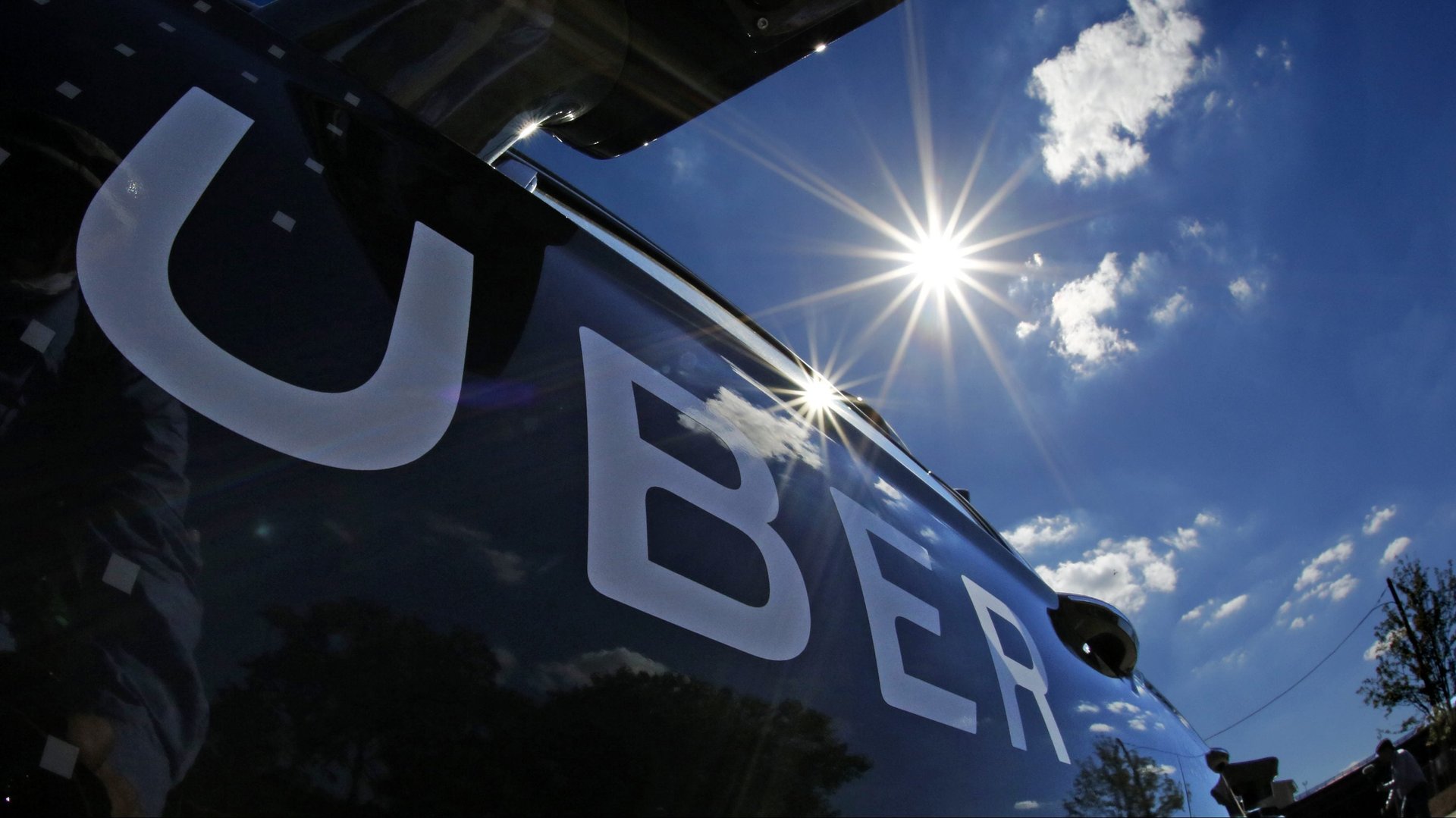A definitive timeline of events behind the most explosive claim in Waymo’s trade secrets lawsuit against Uber
The most explosive allegation yet in Waymo’s lawsuit against Uber hinges entirely on chronology.


The most explosive allegation yet in Waymo’s lawsuit against Uber hinges entirely on chronology.
Waymo, the driverless car unit spun off by Alphabet’s Google, sued Uber in February for misappropriating trade secrets and infringing on patents pertaining to its proprietary lidar technology. Lidar, as in “light radar,” is the component of self-driving car technology that essentially helps the vehicle see. Waymo has said Anthony Levandowski, its former employee and a current Uber engineer, downloaded 14,000 confidential documents before he quit the company in January 2016. Levandowski went on to found Otto, a driverless trucking startup, which was later acquired by Uber.
In its initial complaint, Waymo alleged that Uber ”leveraged stolen information” from the Otto acquisition to jumpstart its own in-house lidar. But in a public hearing in San Francisco on May 3, Waymo attorney Charles Verhoeven, took the claim a step further. “It is clear now,” he told the judge, “that at the time of the download, Uber and Mr. Levandowski were planning to build a replica lidar system for Uber. It turns out, through discovery, we’ve learned that Uber and Levandowski, together, created a cover-up scheme for what they were doing. They created a story for public consumption.”
In other words, Waymo is now alleging that Otto was only ever a shell company set up by Levandowski and acquired by Uber as a vehicle for gaining intellectual property stolen from Waymo. US district court judge William Alsup is expected to rule this week on both Waymo’s request for a preliminary injunction and Uber’s motion to push the case to arbitration. A preliminary injunction could potentially halt Uber’s work on self-driving cars, and the company is desperate to avoid one. Late last month, Uber demoted Levandowski from head of self-driving technologies and said he would be recused from any work on lidar through the remainder of the Waymo litigation.
Below are key events, summarized from court documents and media reports, that show how Waymo reached the dramatic conclusion in its trade secrets lawsuit against Uber.
- Summer 2015: Anthony Levandowski meets with then-Uber executive Brian McClendon and expresses interest in starting a self-driving car startup that Uber could buy to acquire Waymo’s lidar team, according to testimony from Waymo engineer Pierre-Yves Droz.
- October 2015: Scott Boehmke, an Uber engineer, makes a note in his lidar journal about discussing a “NewCo” with McClendon (“BAM”). ”Pros, experience with automotive efforts of competitors,” the note reads. “Cons, no track record. No details.” Waymo alleged in its hearing on May 3 that this “NewCo” referred to the company Levandowski would start and Uber would acquire once he quit.
- Dec. 3, 2015: Levandowski looks up how to access Waymo’s “highly confidential” design server.
- Dec. 11, 2015: Levandowski installs special software on a Waymo laptop to access this design server, then downloads more than 14,000 files, comprising 9.7 GBs of information and including “confidential specifications” for Waymo’s lidar circuit boards.
- Dec. 14, 2015: An SD card is attached to the laptop for eight hours.
- Dec. 18, 2015: Levandowski wipes and reformats this laptop.
- Jan. 4, 2016: Levandowski downloads additional confidential Waymo documents to a personal device, including technical details on Waymo’s lidar sensors.
- “On or around” Jan. 5, 2016: Levandowksi tells Waymo engineer Droz that he plans to “replicate” Waymo technology at a new self-driving car startup, according to testimony from Droz.
- “Mid-January” 2016: Levandowski is seen meeting with “high-level Uber executives” at Uber’s headquarters.
- Jan. 15, 2016: 280 Systems, the company that later becomes OttoMotto LLC, is formed.
- Jan. 27, 2016: Levandowski resigns from Waymo without notice.
- Jan. 28, 2016: Uber’s stock award of 5,309,445 shares to Levandowski, estimated to be worth more than $250 million, begins vesting on this date, according to a document Uber provided to Waymo. Uber has said it’s common practice to backdate stock awards like this following an acquisition, and that Levandowski has zero vested shares.
- Jan. 29, 2016: An email between Levandowski and Uber attorney John Gardner relates to ”legal advice, in anticipation of litigation, regarding due diligence for potential acquisition of Ottomotto.” The email is among 3,500 documents being withheld by Uber under attorney-client privilege.
- Feb. 1, 2016: Otto Trucking is formed.
- Feb. 22, 2016: Uber and Otto prepare a term sheet for Uber’s potential acquisition of the startup.
- May 16, 2016: Otto launches out of stealth mode.
- Aug. 18, 2016: Uber announces its $680 million acquisition of Otto.
- Dec. 13, 2016: Waymo receives an email, “RE: OTTO FILES,” whose recipients include an Uber email alias (the sender’s address was redacted from court filings). The email contains drawings of Otto circuit boards that, Waymo alleges, “bore a striking resemblance” to Waymo’s circuit boards and designs among those downloaded by Levandowski.
- Feb. 9, 2017: Waymo obtains documents through a public records request in Nevada that, it alleges, show Uber was “using Waymo’s intellectual property for an imminent product launch.”
- Feb. 23, 2017: Waymo sues Uber.
Alsup was initially wowed by Waymo’s mound of evidence. “I have never seen a record this strong in 42 years,” he said in a hearing last month. On May 3, he was more skeptical. “Part of the problem is that your best proof is against Levandowski,” Alsup told Waymo’s attorneys. “But here’s the thing. You didn’t sue him. You sued Uber.” He added: “All that has been proven is he downloaded 14,00 documents. … You don’t have any smoking gun.”